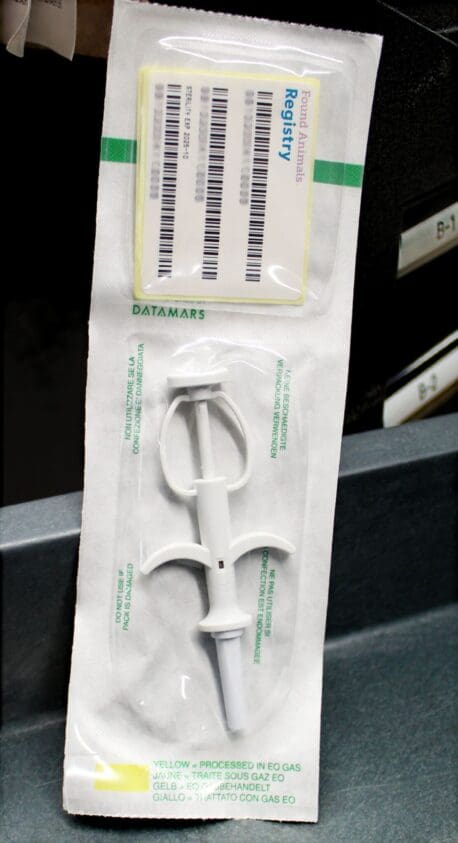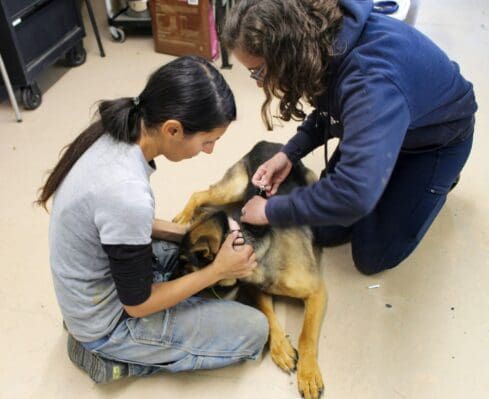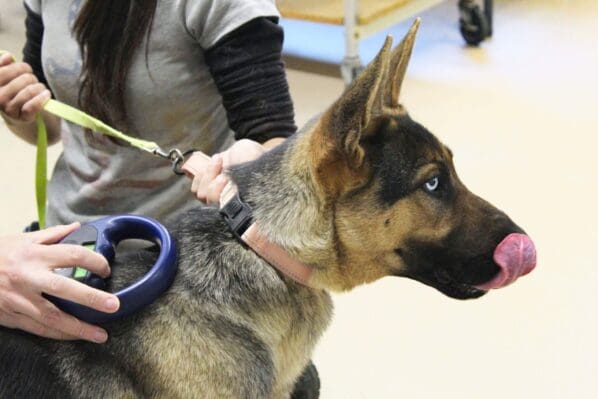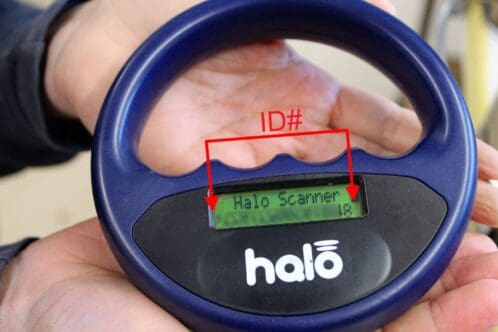When it is both National Pet and Chip Your Pet Month, you know it’s time to talk about microchipping. It is a quick, painless, and affordable process that significantly increases your chances of reuniting with a lost pet. At Rescue Ranch, we chip all of our dogs, and we offer low-cost dog microchips to the public too. If you’re not local, we strongly recommend you consult your vet, or a rescue in your area, about getting your pet chipped.
How do dog microchips work?
A microchip is a tiny, oblong radio frequency transponder that contains a unique ID number.
It doesn’t require a battery or any power source. The chip itself is a tiny capsule that resembles a large grain of rice. It is inserted under the skin between your pet’s shoulder blades, using a fairly large bore needle. The procedure takes no longer than a vaccine and typically causes little to no discomfort. Some dogs react to the brief pinch. Once it’s injected, the tech will scan the area to make sure the chip is transmitting. The ID number should show up on the scanner’s display.
Next, you’ll need to register your dog’s number. There are free and paid services. We currently use 24Petwatch, a free national registry. If you don’t register your dog’s ID number, the chip will be useless because it won’t be associated with your contact information.
Then, if someone finds your pet they can ask a vet or a shelter to scan for a chip. The number returned by the scanner can then be used to find your contact details. Of course, you’ll need to update your pet’s information on the registry if you move or the contact information changes.
The difference between a GPS and a microchip
GPS devices are external accessories, need power, and most often require a subscription. Typically they’re mounted on a collar or harness. Assuming the GPS is powered, functioning, and still affixed to your dog, it will transmit their position. But GPSs aren’t associated with any information and won’t help a third-party find you. Microchips, on the other hand, can’t give you a location, but they’re permanently inserted under the skin, require no power, and will help rescuers reunite you thanks to the data stored with the registry.
The two technologies complement each other, and you can certainly use both for even more peace of mind.
Microchips save lives
There’s no doubt that microchipping saves lives. Most lost pets are never reunited with their owners, up to 80% according to some reports. When you chip your dog (or cat) the chances of a reunion more than double. There are so many ways you could be separated from your pet: on a trip, at the park, on a trail, in a road accident, or during an emergency evacuation, to name just a few. If there’s even a chance that it will help, there’s really no reason not to do it. Learn more about obtaining low-cost dog microchips at Rescue Ranch.







